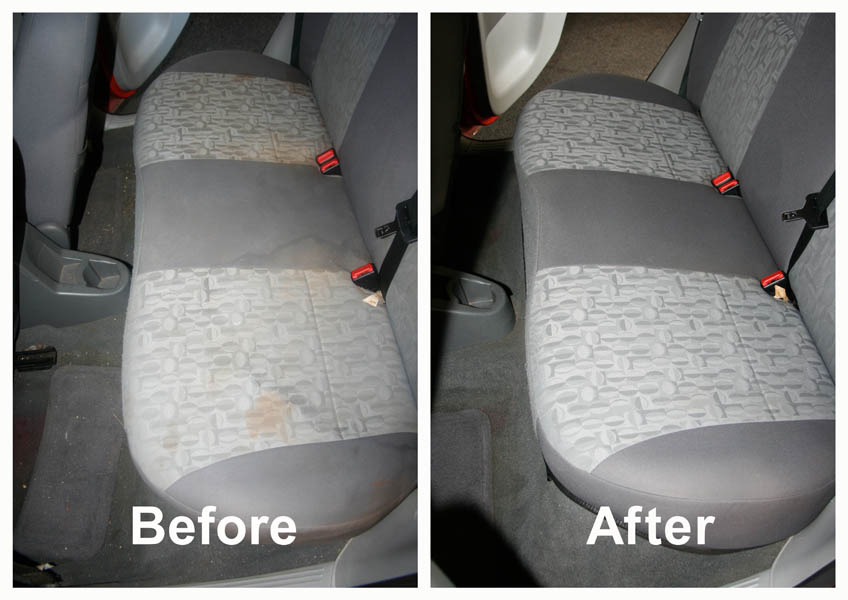
WHAT DO YOU KNOW ABOUT DIRT?
Understanding Types Of Dirt And How To Clean Them…
By Bud Abraham, Detail Plus
Articles I have written about cleaning carpets have given rise to several questions about carpet and fabric upholstery cleaning, which I feel should be shared with the universe of detail readers.
In one article, I mentioned that detailers needed to know not only the material they were attempting to clean, but also the type of dirt they were trying to remove. So, this post will talk a bit about dirt.
What, Exactly, Is Dirt?
Call it crud, grime, or soil, dirt is any substance foreign to carpets and upholstery. The difficulty in removing dirt is that some fibers, you could say, like certain kinds of dirt more than others. So, a detailer has to be smarter than the soil, right?
In short, there are three types of dirt.
- Water soluble: 10 percent of soils
- Solvent-soluble: 10 percent of soils
- Insoluble: 80 percent of soils
Those that are water soluble are starchy materials, such as food spills. Those that are solvent-soluble are tars, inks, oils. And, finally, those that are insoluble include sand, clay, etc.—anything that will not dissolve in a liquid.
The challenge for the interior detailer is knowing how to clean each one of these different soils. You do not have to be told that vehicles have large amounts of dirt. Shoes drag in dirt, whether from sidewalks not swept regularly or when dry, sandy soil gets wet and is tracked into the vehicle. Thank goodness for floor mats!
Then, asphalt surfaces have another kind of dirt, an oily dirt which is solvent-soluble. Finally, there are soluble soils, which are most common and result from spills, which usually occur on fabric upholstery, but in dusty and windy climates, fabric seats can become embedded with dry soil.
So how to clean all these different types of soils and dirt?
Tricks Of The Trade
The first thing is to determine how the soil got into/onto the carpet or upholstery in the first place.
Since 80 percent of the dirt is insoluble it is critical to do a very thorough vacuuming, not a quick once-over with the extractor nozzle. Unfortunately, however, dry soils get ground into the carpet fibers and don’t respond easily to vacuuming. What to do?
Oftentimes, detailers will apply a quantity of shampoo—sometimes too much—allow it to dwell and then try to remove the dirt with their trusty extractor. This doesn’t always result in a clean carpet or floor mat.
The key to cleaning carpets is agitation, and a lot of it, as well as the best carpet shampoo—not a degreaser or all-purpose cleaner. So, before extracting, what should be done is to friction scrub with a nylon scrub brush or rotary shampooer tool. But be careful, as some carpet and upholstery fibers can be damaged by scrubbing too aggressively,
So you have followed this process to the letter and a dirty appearance still remains in the carpet and, most often, in the carpet floor mat. What did you do wrong? Nothing. What you have is fiber damage.
Now you see it, now you don’t. Determining the type of dirt on or in the carpet or upholstery, and taking the proper steps to remove it, will go a long way in presenting the customer with a like-new interior.
Soil Challenges
Detailers are often faced with challenges primarily from water-soluble soils. For example, let’s say there is a spot on the driver’s side carpet. Of course, the customer has no idea how it got on the carpet or what it is. It just magically appeared.
Most likely it is a cup of coffee, tea or a cola soda. The driver slammed on the brakes and the container spilled, saturating the carpet and leaving a big spot.
This water-soluble spot needs water-soluble cleaner. If eight ounces of fluid was spilled, you will need enough cleaning agent to dissolve that much soil. While these soils are not ground-in, they will still need agitation and a great deal of flushing.
With water-soluble soils, what you see on the surface is not the entire story. What is in the backing will be a much bigger problem, so flushing with clean water is the only way to move the soil.
Now you have to dry the carpet. To remove the water used for flushing, use the extractor to get as much water as possible out of the carpet. This should be followed by a dry toweling of the carpet and then an interior dryer used to “power dry” the carpet. Some prefer to start the car and turn on the heater to aid in drying. That works, but could use up a lot of the customer’s gasoline.
Remember, with carpet cleaning, flushing with water is part of the “agitation” process, so the more flushing you use, the more you are agitating.
To clean carpets properly, you need the know-how, the ability to analyze soils, and the tools to do the job. With the cleaning, chemistry and technology resources available on the market today, there is no reason to not be successful in removing any type of soil in any situation. But you have to be willing to invest in the key ingredients.
- Knowledge
- Chemistry
- Technology and Tools
If you don’t, you are kidding yourself and shorting your customers who trust their vehicles to you.
Remember you have to be smarter than the dirt. As always, any questions, feel free to email to buda@detailplus.com.





